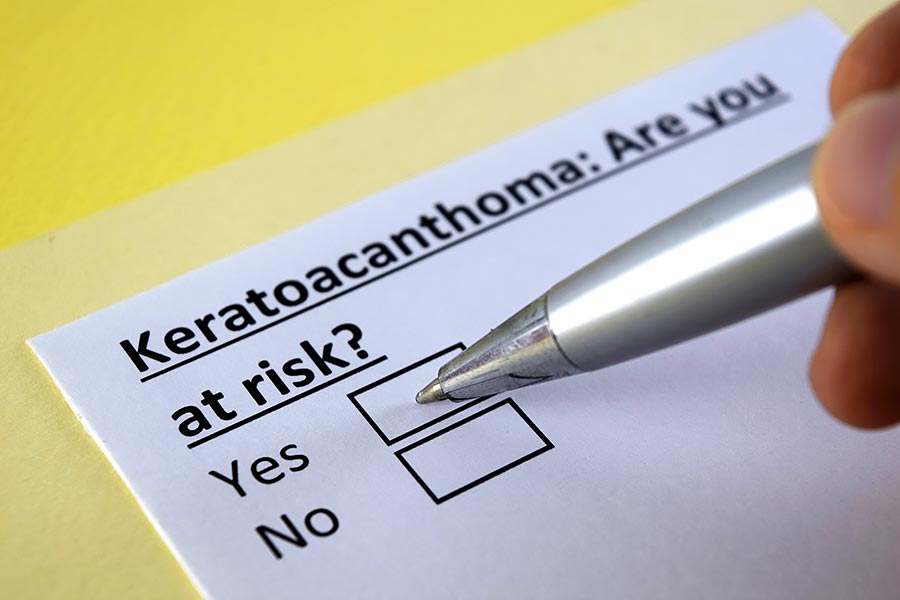Keratoacanthoma (KA) is a common, benign skin growth that most often affects light-skinned, elderly individuals. It is rapidly growing and most often found on the face, hands, arms, and trunk. “If untreated, KAs usually stop growing around 6-8 weeks, stay dormant and unchanging for 2-6 weeks, and then finally spontaneously regress slowly over 2 to 12 months, frequently healing with scarring.”(1)
While the exact cause of KA is unknown, there are factors that put a person at increased risk, including:
- sun exposure;
- contact with chemical carcinogens, or cancer-causing chemicals;
- smoking;
- infection with some strains of a wart virus, such as human papillomavirus;
- trauma;
- genetic factors.(2)
There is often difficulty distinguishing KAs from squamous cell carcinoma, leading many clinicians to recommend treatment of these lesions.(3)
The therapy for keratoacanthoma is generally surgical excision of the lesion. Cryotherapy has been used successfully in treating small keratoacanthomas and in keratoacanthomas found in difficult to treat locations. Cryotherapy is also used as an adjunct to surgical removal.”(4)
Hydrozid® is an FDA cleared portable cryosurgery device, designed for primary care physicians, pediatricians, dermatologists, and podiatrists, for the treatment of dermatofibromas, actinic keratosis, skin tags, warts, and a number of additional benign and premalignant skin conditions. Qualified providers, visit our Registration page to set up an account and order.
(1) American Osteopathic College of Dermatology, Keratoacanthoma, https://www.aocd.org/page/Keratoacanthoma
(2) Biggers, A. MD reviewer, Healthline, Keratoacanthoma, https://www.healthline.com/health/keratoacanthoma
(3) Brewer, J. MD, Robinson, J. MD, Corona, R. MD, Keratoacanthoma: Management and Prognosis, https://www.uptodate.com/contents/keratoacanthoma-management-and-prognosis
(4) Chuang, T-Y MD, Medscape, Keratoacanthoma Treatment and Management, https://emedicine.medscape.com/


